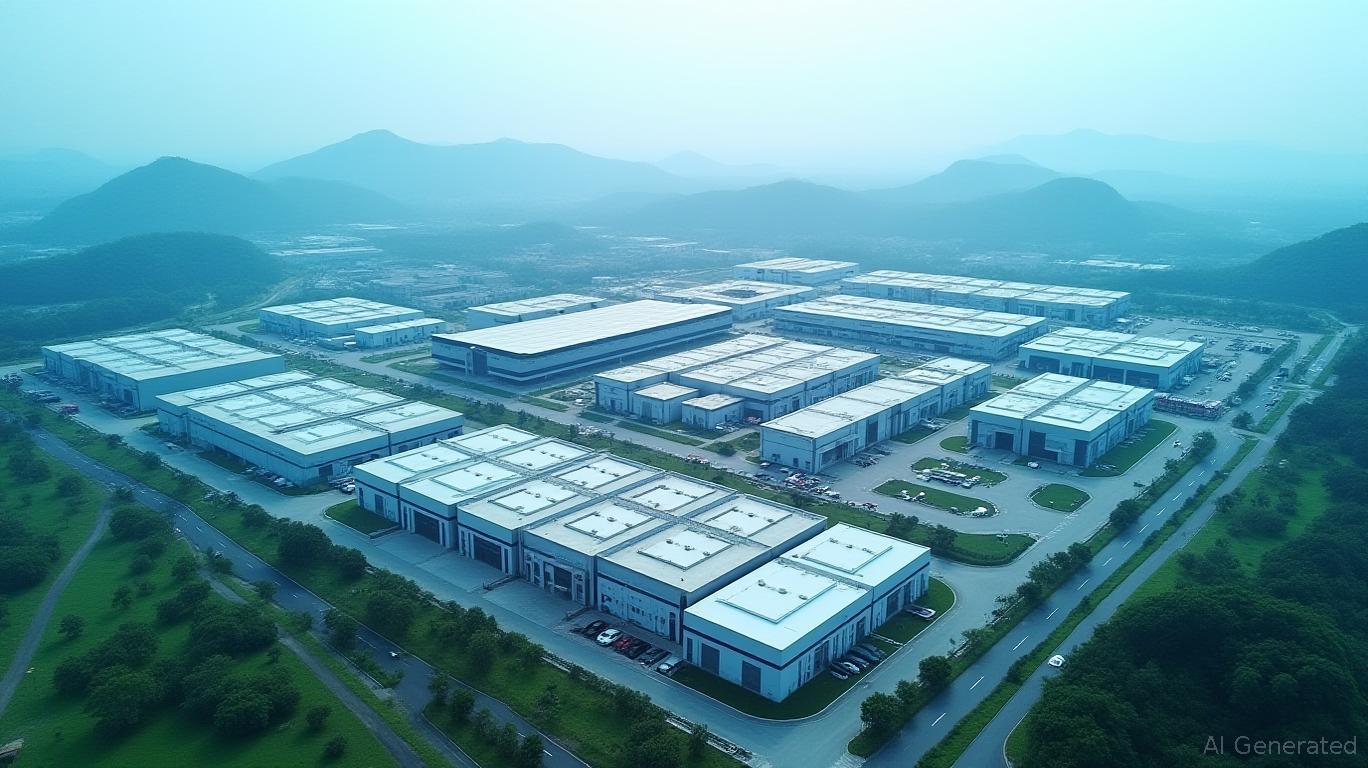ChipMOS Technologies: Navigating Semiconductor Cycles with Caution and Cash
ChipMOS Technologies (NASDAQ: IMOS), a key player in the semiconductor outsourcing sector, has emerged as a company caught between cautious optimism and lingering headwinds. The Taiwan-based OSAT (outsourced semiconductor assembly and test) provider reported mixed financial results for Q1 2025, highlighting both resilience and vulnerabilities in its strategy. Let's dissect the data to assess whether ChipMOS is positioned to sustain profitability and deliver shareholder value in a volatile industry.

Revenue Growth: Modest Gains, Persistent Challenges
ChipMOS's Q1 2025 revenue rose 2.5% sequentially to NT$5.53 billion (US$166.7 million), marking a slight improvement from Q4 2024. Year-over-year growth, however, was tepid at 2.1%, underscoring the sector's uneven recovery. The company attributed the sequential uptick to stronger performance in its memory business and, to a lesser extent, DDIC (display driver IC) segments.
But the numbers are not all positive. Net profit plummeted to NT$176.3 million (US$5.3 million), a 45% decline from Q4 2024, driven by weaker non-operating income—primarily lower foreign exchange gains. This highlights a recurring vulnerability: reliance on external factors like currency fluctuations, which can distort profitability in the short term.
Inventory Management: Progress, but Room to Improve
The company's inventory turnover ratio and Days Sales of Inventory (DSI) provide clues about operational efficiency. While not explicitly stated in the Q1 2025 report, historical trends suggest ChipMOS has made strides in optimizing inventory. For instance, its 2024 full-year gross margin of 13% (down from 16.6% in 2023) indicates cost pressures, but its DSI likely remains competitive within the OSAT sector.
Analysts note that semiconductor companies with strong inventory management—like industry leaders ASE Group and Amkor Technology—typically achieve DSI of 40–50 days. If ChipMOS's DSI is closer to this range, it signals effective stock turnover. However, rising interest rates and supply chain complexities could test its ability to maintain this balance.
Dividend Strategy: A Steady Hand, but Not Generous
ChipMOS's dividend policy has been steady, if conservative. In May 2025, shareholders approved a cash dividend of NT$1.20 per common share (US$0.80 per ADS), to be paid in July. While this reflects confidence in liquidity—cash reserves stood at NT$13.6 billion as of Q1—the payout ratio remains modest.
Critically, the dividend is tied to ChipMOS's robust cash position, which has grown despite profit volatility. The company's NT$525 million share repurchase authorization further signals a focus on shareholder returns. Yet investors seeking high yields may be underwhelmed: the dividend yield is around 1.5%, below peers like ASE Group (2.3%).
Sector Positioning: OSAT's Middleweight in a Turbulent Market
ChipMOS operates in a sector dominated by giants like ASE Group and SPIL, but it holds niche strengths. Its focus on memory and DDIC testing positions it to benefit from demand for advanced chips in AI, automotive, and consumer electronics. However, global trade tensions—particularly U.S.-China semiconductor restrictions—and macroeconomic uncertainty remain risks.
The company's 6.3% annual revenue growth in 2024, while modest, aligns with the broader OSAT industry's gradual recovery post-pandemic. Yet its profitability lags peers, partly due to lower gross margins. This raises questions: Can ChipMOS sustain margins amid rising costs, or is it under-investing in high-margin segments?
Investment Takeaway: Hold for Liquidity, but Watch Margins
ChipMOS presents a cautiously bullish case. Its cash reserves and dividend policy offer stability, and its niche in memory testing positions it to capitalize on long-term semiconductor demand. However, investors should remain wary of:
- Profitability Volatility: Foreign exchange swings and margin pressures could persist.
- Competitive Threats: Larger rivals may undercut pricing or outpace innovation.
- Geopolitical Risks: Supply chain disruptions or trade curbs could hamper growth.
Bottom Line: ChipMOS is a hold for investors prioritizing stability over high growth. Its cash-rich balance sheet and disciplined capital returns make it a defensive play in the OSAT sector. But unless it demonstrates margin expansion or a clearer path to high-margin segments, it may underperform in a market that rewards profitability as much as revenue.
Stay tuned for Q2 2025 results, where the company's ability to grow net income alongside revenue will be a key test of its long-term viability.

Comments
No comments yet